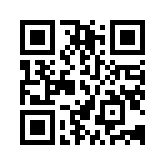Should You Be Worried About Monkeypox?
Because COVID wasn’t enough, there have been new reports of Monkeypox within the United States and beyond in recent weeks (written 6/22). Prior to this, the last Monkeypox outbreak in the US was in 2003. I have had a few patients concerned with upcoming summer travel, so I thought I’d update everyone.
What is Monkeypox? Monkeypox is viral infection caused by the Monkeypox virus, and the virus is in the same family of cowpox and smallpox. It is called monkeypox because it was first discovered in monkeys, but humans can be affected as well. The disease is usually seen in central and West African countries, but rarely cases are seen outside of Africa. Recently, there have been over 100 cases in Europe, Canada and the US. This is very uncommon and has caused some concern for patients.
How do you catch Monkeypox? The virus can be acquired through infected animal carcasses. Person to person spread is from respiratory droplets and exchange of body fluids, primarily through sexual contact. There is little evidence for it’s spread on inanimate objects.
Is there a vaccine for Monkeypox? No. However, it is believed that there is some cross-protection from the smallpox vaccine. However, administration of the smallpox vaccine ended in the 1970s. Upon my research, I learned that there is a current vaccination for prevention of Monkeypox available since 2019 in the United Kingdom.
What are the symptoms of Monkeypox? Symptoms begin with “flu-like” symptoms of fever, headache, muscle aches. Enlarged lymph nodes are more often seen in Monkeypox than other flu-like illnesses. Patients with chickenpox generally do not have enlarged lymph nodes.
What does the rash of Monkepox look like? The rash of Monkeypox looks similar to chickenpox but the individual bumps are often a little bigger. The rash generally starts on the face or genitalia, but can often be seen on the hands and feet.
How is it officially diagnosed? Monkeypox is diagnosed by performing viral culture on suspicious lesions.
What is the therapy for monkeypox? Suspected individuals should isolate for 21 days and contacts should be traced and quarantine as well. Like chickenpox, patients are considered infectious until all lesions are crusted Most infections are self-limited and resolve without complication. There are antivirals available for those with a more severe infection or associated pneumonia. In recent outbreaks, there was a <5% risk of death, with immunocompromised patients, the very young and the very old being at highest risk.
So, to answer the question in the beginning of the article… No, I do not think you need to be worried about monkeypox. The lesions are quite visible and require skin to skin contact in most cases. Enjoy your summer travel!
Here are my references in case you want to learn more.
___________________________________________________
If you know someone who may find this article helpful, please share it with them! Follow us on social media this week, and subscribe to our growing YouTube channel! If you would like to receive these posts in your email inbox, Subscribe to our Site.
